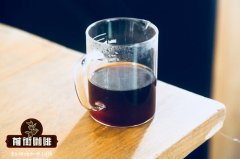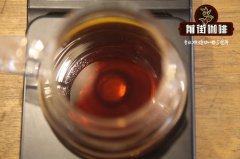Sumatran coffee Sumatra Aceh Miangaya Coffee introduction.

Professional coffee knowledge exchange more coffee bean information please follow the coffee workshop (Wechat official account cafe_style)
Aceh, a place famous for the tsunami. Aceh is located at the northwestern tip of the Indonesian archipelago. Because of its geography, it has long become an independent kingdom of Islamic faith. Since the 7th and 8th centuries, it has become a stronghold for the eastward spread of Islam to India and Middle Eastern countries, and a relay station for Southeast Asian countries to make a pilgrimage to Mecca. During the period of Aceh's prosperity and growth, it was even known as the "Kingdom of Sudan of Aceh." it controlled the trade hub of the first generation of the Strait of Malacca, and its national strength reached its peak.
Miangaya comes from a high area on the edge of Lake Tawa in North Sumatra. Coffee is grown in remote areas, and it is a long way from the village of Takengon in the area. Aceh Miangaya is located on the hillside of the lake, about 1200 to 1400 meters above sea level. Coffee grows along the hillside, and it is even more necessary to resist the strong winds coming from the lake.
Coffee is the second largest cash export crop in Aceh. It is estimated that there are about 60000 small-scale coffee farmers, each owning about 1-2 hectares of coffee planting land. Indonesia's traditional way of coffee trade is multi-point supply, starting from farmers, through multi-layer middlemen, slowly accumulate a large number of export goods. In the Indonesian coffee trading system, direct trade in which a single window receives goods from farmers and then arranges for export is quite rare in Indonesia. Because the supplier has a local special pipeline in Aceh, with the assistance of Mr. Ekka, who is also from Aceh, this batch of coffee from Aceh Mangaya (Aceh Miyagaya) can be transported and exported from remote areas.
By working directly with farmers in the village, the steps of coffee cultivation and post-production can be tracked more directly. Through the communication and feedback on quality and agricultural technology between the two sides, farmers can further improve and maintain product consistency. In addition, farmers are happy to meet export buyers and know people who export their coffee abroad.
Important Notice :
前街咖啡 FrontStreet Coffee has moved to new addredd:
FrontStreet Coffee Address: 315,Donghua East Road,GuangZhou
Tel:020 38364473
- Prev

What is ECX? Why is it that sometimes the drink of Yega Chefe doesn't have the classic flavor of Yega Chefe?
Professional coffee knowledge exchange more information on coffee beans please follow the coffee workshop (Wechat official account cafe_style) Yegashafi coffee beans, the earliest definition is produced in Ethiopia, a coffee bean called the town of Yegashefi. Most coffee fans may be no stranger to Ethiopia, which is the birthplace of Arabica and the most important native / wild in the world
- Next

Bali Coffee Gold Coffee introduction.
Professional coffee knowledge exchange more coffee bean information Please pay attention to the coffee workshop (official Wechat account cafe_style) Coffee trees in Bali grow mostly on the high mountains of 1000-2000 meters above sea level in the north-central area. as the area is cool and foggy, it is suitable for coffee trees to grow, so the Bali "Golden Coffee" arises at the historic moment, with an average annual output of 8000 tons. There is a Chinese family in Nusa Dua.
Related
- Beginners will see the "Coffee pull flower" guide!
- What is the difference between ice blog purified milk and ordinary milk coffee?
- Why is the Philippines the largest producer of crops in Liberia?
- For coffee extraction, should the fine powder be retained?
- How does extracted espresso fill pressed powder? How much strength does it take to press the powder?
- How to make jasmine cold extract coffee? Is the jasmine + latte good?
- Will this little toy really make the coffee taste better? How does Lily Drip affect coffee extraction?
- Will the action of slapping the filter cup also affect coffee extraction?
- What's the difference between powder-to-water ratio and powder-to-liquid ratio?
- What is the Ethiopian local species? What does it have to do with Heirloom native species?

